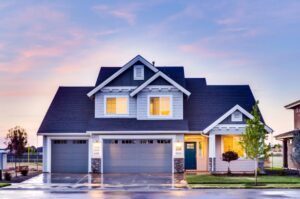What are the things to avoid in the home?
When it comes to our homes, we want to create a space that is not only comfortable and inviting but also safe and healthy. To achieve this, it’s essential to be aware of potential hazards and take proactive steps to avoid them. In this article, we will explore the top things to avoid in your home to ensure a safe and harmonious living environment for you and your family.
1. Clutter:
Clutter is not just an eyesore; it can also create physical and mental chaos. It obstructs pathways, increases the risk of tripping and falling, and makes it difficult to find what you need. Start by decluttering regularly and creating designated storage spaces for items. Adopting a minimalist approach will not only create a cleaner and more organized home but also contribute to a calmer and more peaceful mindset.
2. Poor Indoor Air Quality:
Indoor air quality is crucial for our overall health and well-being. Avoid using products that release harmful chemicals into the air, such as aerosol sprays, synthetic air fresheners, and certain cleaning agents. Opt for natural alternatives like essential oils or vinegar-based cleaners. Additionally, ensure proper ventilation by opening windows regularly to allow fresh air to circulate.
3. Toxic Cleaning Products:
Conventional cleaning products often contain toxic chemicals that can be harmful to both our health and the environment. Avoid using products that contain ammonia, bleach, phthalates, and other harsh ingredients. Instead, opt for eco-friendly alternatives or make your own cleaning solutions using simple ingredients like baking soda, lemon juice, and white vinegar. Not only are these options safer, but they are also more cost-effective and sustainable.
4. Unsafe Furniture and Decor:
When choosing furniture and decor for your home, safety should be a top priority. Avoid furniture with sharp edges or unstable structures, as they can pose injury risks, especially for children. Additionally, be cautious with decorative items that can easily break or topple over. Secure heavy furniture to the wall to prevent accidents, and opt for childproofing measures if you have young children or pets.
5. Faulty Electrical Wiring:
Electrical issues are not only inconvenient but also hazardous. Avoid overloading electrical outlets by using power strips and extension cords responsibly. Regularly check for frayed wires, loose connections, and other signs of electrical problems. If you notice any issues, consult a qualified electrician to address them promptly. Taking these precautions can significantly reduce the risk of electrical fires and shocks.
6. Lack of Fire Safety Measures:
Fires can be devastating, but with the right precautions, they can be minimized. Avoid using faulty or outdated electrical appliances, and never leave candles unattended. Install smoke detectors on each floor of your home and regularly test them. Have fire extinguishers readily available and ensure everyone in the household knows how to use them. Develop a fire escape plan and practice it regularly to ensure everyone’s safety in case of an emergency.
Conclusion:
Creating a safe and harmonious home requires attentiveness and proactive measures. By avoiding clutter, improving indoor air quality, using non-toxic cleaning products, ensuring furniture and decor are safe, addressing faulty electrical wiring, and implementing fire safety measures, you can significantly reduce potential hazards. A safe and healthy home not only provides peace of mind but also fosters a positive and nurturing environment for you and your loved ones. Remember, small changes and consistent efforts can make a big difference in creating a home that promotes well-being and happiness.

 Starting your own house construction project can seem like an exciting journey, but before you start breaking ground, there’s one important step that needs to be taken: soil testing. While often overlooked in the haste of getting the building started, conducting a soil test is crucial for determining the structural capabilities and longevity of the new home or structure being built on it – not to mention its ability to withstand harsh weather conditions and remain stable over time. Read on as we explore why exactly soil testing should be considered a must-do prior to planning any type of big construction project.
Starting your own house construction project can seem like an exciting journey, but before you start breaking ground, there’s one important step that needs to be taken: soil testing. While often overlooked in the haste of getting the building started, conducting a soil test is crucial for determining the structural capabilities and longevity of the new home or structure being built on it – not to mention its ability to withstand harsh weather conditions and remain stable over time. Read on as we explore why exactly soil testing should be considered a must-do prior to planning any type of big construction project.
 Are you dealing with cracked concrete on your property and don’t know what to do? Having damaged concrete can be a major headache and, if left unaddressed, it can lead to further damage in the future. Don’t worry – repairing cracked concrete doesn’t have to be daunting or expensive! With some simple steps, helpful advice, and professional tools, you will soon find yourself solving concrete problems like a pro. Read on for all the advice you need on how to repair cracked concrete quickly and easily.
Are you dealing with cracked concrete on your property and don’t know what to do? Having damaged concrete can be a major headache and, if left unaddressed, it can lead to further damage in the future. Don’t worry – repairing cracked concrete doesn’t have to be daunting or expensive! With some simple steps, helpful advice, and professional tools, you will soon find yourself solving concrete problems like a pro. Read on for all the advice you need on how to repair cracked concrete quickly and easily.